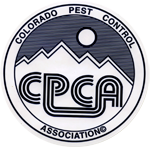Pest Library - Flies & Moths
Flies

True flies are insects of the order Diptera (di = two, and pteron = wing), possessing a single pair of wings on the mesothorax and a pair of halteres, derived from the hind wings, on the metathorax.
The presence of a single pair of wings distinguishes true flies from other insects with "fly" in their name, such as mayflies, dragonflies, damselflies, stoneflies, whiteflies, fireflies, alderflies, dobsonflies, snakeflies, sawflies, caddisflies, butterflies or scorpionflies. Some true flies have become secondarily wingless, especially in the superfamily Hippoboscoidea, or among those that are inquilines in social insect colonies.
Diptera is a large order, containing an estimated 240,000 species of mosquitos, gnats, midges and others, although under half of these (about 120,000 species) have been described. It is one of the major insect orders both in terms of ecological and human (medical and economic) importance. The Diptera, in particular the mosquitoes (Culicidae), are of great importance as disease transmitters, acting as vectors for malaria, dengue, West Nile virus, yellow fever, encephalitis and other infectious diseases.
Moths

A moth is an insect closely related to the butterfly, both being of the order Lepidoptera. The differences between butterflies and moths are more than just taxonomy. Sometimes the names "Rhopalocera" (butterflies) and "Heterocera" (moths) are used to formalize the popular distinction. Many attempts have been made to subdivide the Lepidoptera into groups such as the Microlepidoptera and Macrolepidoptera, Frenatae and Jugatae, or Monotrysia and Ditrysia.
Failure of these names to persist in modern classifications is because none of them represents a pair of "monophyletic groups". The reality is that butterflies are a small group that arose from within the "moths" and there is thus no way to group all of the remaining taxa in a monophyletic group, as it will always exclude that one descendant lineage.
Moths are sturdy and usually are more resistant to pesticides than are mosquitoes and flies. Some moths are farmed. The most notable of these is the silkworm, the larva of the domesticated moth Bombyx mori. It is farmed for the silk with which it builds its cocoon. As of 2002, the silk industry produces over 130 million kilograms of raw silk, worth about 250 million U.S. dollars, each year. Not all silk is produced by Bombyx mori. There are several species of Saturniidae that are also farmed for their silk, such as the Ailanthus moth (Samia cynthia group of species), the Chinese Oak Silkmoth (Antheraea pernyi), the Assam Silkmoth (Antheraea assamensis), and the Japanese Silk Moth (Antheraea yamamai). The mopane worm, the caterpillar of Gonimbrasia belina, from the family Saturniidae, is a significant food resource in southern Africa.
Despite being framed for eating clothing, most moth adults do not eat at all. Most like the Luna, Polyphemus, Atlas, Prometheus, Cercropia, and other large moths do not have mouths. When they do eat, moths will drink nectar.


